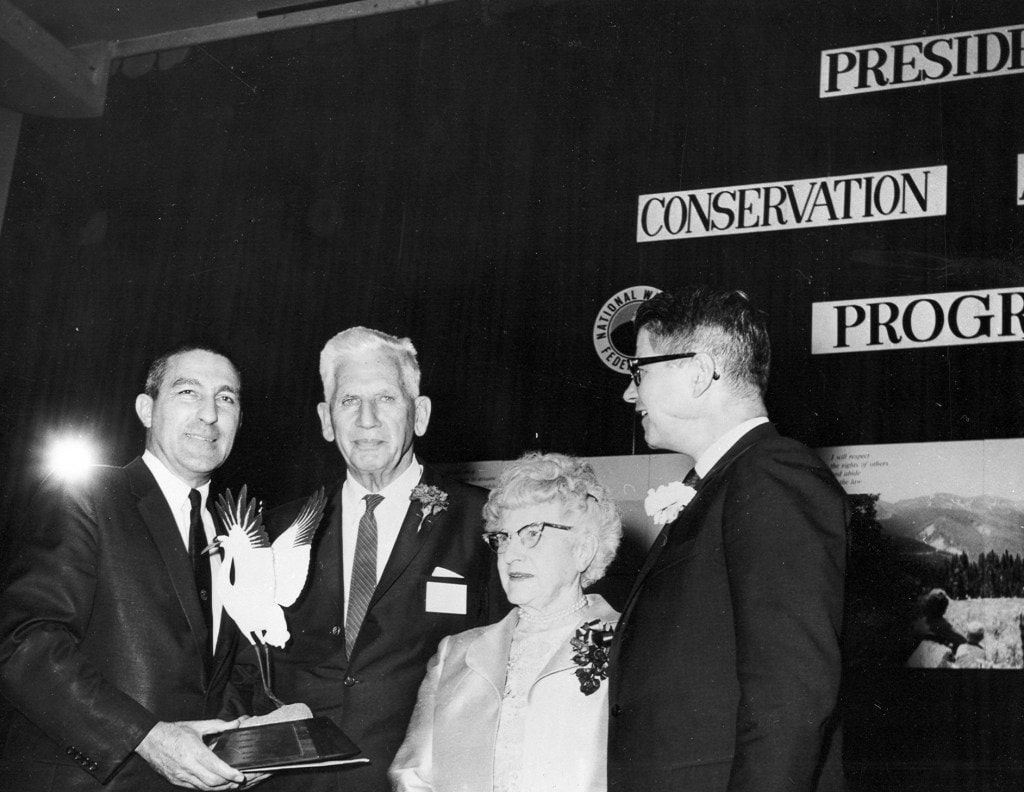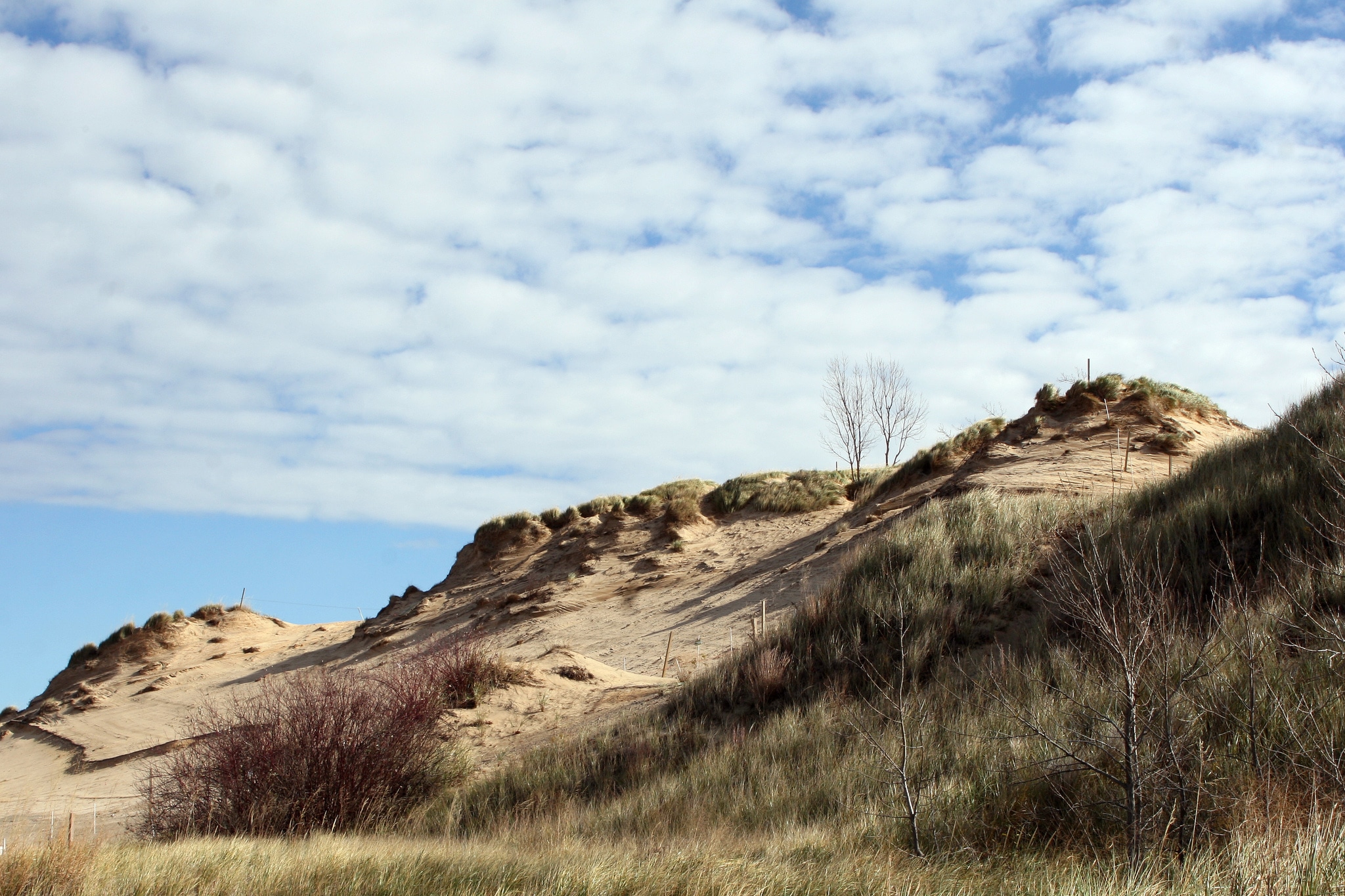The vast lands of the Midwest host fewer than a dozen national parks. But on February 15, Indiana Dunes officially became the nation’s newest and 61st national park. The designation marks the final chapter of a century-old conservation story that is also the story of Chicago, and a reframing of wild places beyond the traditional ideals embodied by the Yellowstones and Yosemites of the West.
In 1898, as the American frontier gave way to increasing population and development, a botanist from the University of Chicago authored an article on the intricate ecosystems in the dunes on the shore of Lake Michigan outside the burgeoning Chicago city limits. With these papers, Henry Cowles launched a 120-year citizen movement to save the Indiana Dunes from destruction.
The dunes were more than just the sand formations and the beaches bordering the expansive waters over which they stood sentinel. They were an untamed landscape containing wetlands such as bogs and swamps, pieces of the prairie that were disappearing from the plains, and sprawling oak savannas, home to an array of biodiversity. The dunes’ identity as a wild place, valued as such by the people in its neighboring urban hub, became entwined with the identity of Chicago as that city grew up, with many Chicagoans heading to the dunes to enjoy solitude, fresh air and open spaces.
In 1908, as industry encroached on this beloved place in the form of steel mills, harbors and breakwaters, Cowles joined with other recreation enthusiasts to form the Prairie Club of Chicago, creating the first call to formally protect the dunes. Slogans like “Save the Dunes” and “A National Park for the Middle West, and all the Middle West for a National Park” sprang up as anthems among proponents for its protection.

Photo Courtesy: NPS
After the National Park Service (NPS) was established in 1916, its first-ever director Stephen Mather made protecting the Indiana Dunes among his early priorities, holding hearings in the city shortly after the NPS came into being. Hundreds of people turned out to show their support. But the advent of World War I shifted priorities away from things like establishing national parks, and without formal protections, the dunes remained vulnerable to the potential threat of development. The same year, the highest sand dune, the 200-foot-tall Hoosier Slide, was carted away in boxcars by the Ball Brothers, manufacturers of the glass jars that bear their name, and the Pittsburgh Plate Glass Company. Indiana established the area as a state park in 1926, but it remained “relatively small in size and scope, and the push for a national park continued,” according to the NPS.
Until one day in Dorothy Buell’s kitchen in 1952.
Buell, a local English teacher, rallied a group of women at her home to strategize how to protect the remaining dunes from development. They founded the Save the Dunes Council, with her famous declaration, “We are prepared to spend the rest of our lives if necessary to save the dunes.”
In contrast to the resounding support the dunes enjoyed in 1916, Buell and her colleagues faced a vocal segment in favor of industry and development. The 1960s saw just as many “Jobs not Dunes” signs as “Save the Dunes,” according to the organization, and both state and federal legislators in Indiana were against a park in favor of a new port to serve the exploding city.
At a loss in her home state of Indiana, Buell cast around for influential support for the dunes, landing on Paul H. Douglas, a senator from neighboring Illinois. She wrote him a letter asking for his leadership, with those efforts eventually resulting in a meeting in the Rose Garden between Douglas and President John F. Kennedy. Ultimately, a plan emerged—the so-called Kennedy Compromise—that paved the way for the establishment of both a national lakeshore and a port.

Sen. Paul H. Douglas and Dorothy Buell (center) both played a pivotal role in helping establish Indiana Dunes National Lakeshore. (Photo Courtesy: NPS)
Fourteen years after that day in Buell’s kitchen, Congress designated and President Lyndon Johnson signed into law the Indiana Dunes National Lakeshore at more than 8,000 acres. Save the Dunes and other advocates continued to fight for the subsequent bills that enlarged the park to its current size of more than 15,000 acres.
Over the following years, Indiana Dunes National Lakeshore cemented its place in the psyche of Chicago residents as a rare wild backyard of an urban hub, with people taking advantage of its 50 miles of trail and 15 miles of beach along Lake Michigan’s shoreline to hike, bike, camp and paddle. A 2009 NPS demographic survey shows that about 35 percent of visitors come from the Chicago area, and 80 percent of total visitors come from Indiana and Illinois. In 2018, more than 1.7 million recreation visitors traveled to the lakeshore.
Indiana Dunes is unique in that visitors can access the park via public transit directly from an urban hub. The Chicago South Shore and South Bend Railroad commuter line stops at four stations throughout the park, providing easy access to campgrounds, trails and beaches, and allows bikes on board on weekends.

A trail at Cowles Bog in the fall. (Photo Credit: NPS)
“There’s always been something that’s special about this place, that it’s so accessible to this huge population of Chicago and surrounding suburbs, to so many people and different segments of society,” said Bruce Rowe, public information officer at Indiana Dunes National Park. “We see a lot of people from underserved parts of the city, and some of those folks—especially school groups that come to our education programs—may never get out to the huge Western national parks, between the fact that they’re so far away and the cost of getting there. We get kids that come out to Douglas Center for Environmental Education who’ve literally never gone out in the woods.” He said the park is also experimenting with shuttles within park boundaries to make transit more convenient and lower its carbon footprint.
Proponents for advancing Stephen Mathers’ original attempts to designate the dunes as a national park found a new champion in Indiana Rep. Pete Visclosky, who represents Indiana’s First District, which encompasses the dunes. The bill to designate Indiana Dunes National Park was added as a line item in a spending bill that President Trump signed on February 15.
The designation of Indiana Dunes as an official national park won’t change the way it’s managed much—it already falls under the purview of the NPS and has benefitted from stringent protections under its lakeshore designation “to conserve scenery, natural and historic objects, and wildlife, and to provide for the enjoyment of those resources in a manner that will leave them unimpaired for the enjoyment of future generations.” Rowe notes the new national park designation is likely to raise its profile on the national stage—which could result in more visitors and a boost to northwest Indiana’s economy. But mostly, he says, its new status is a recognition of how special the dunes are and a nod to the local people who have thought that this wild place deserved to be a national park, all the way back to more than a century ago.
“In 1955, I stood outside the Field Museum [of Natural History in Chicago] getting signatures on a petition for Save the Dunes,” said Jeanette Neagu, a member of Save the Dunes since 1955, who also served as one of its presidents for several years. “From one end of life to the other, I can think of no greater privilege than to advocate for the Indiana Dunes National Park.”


